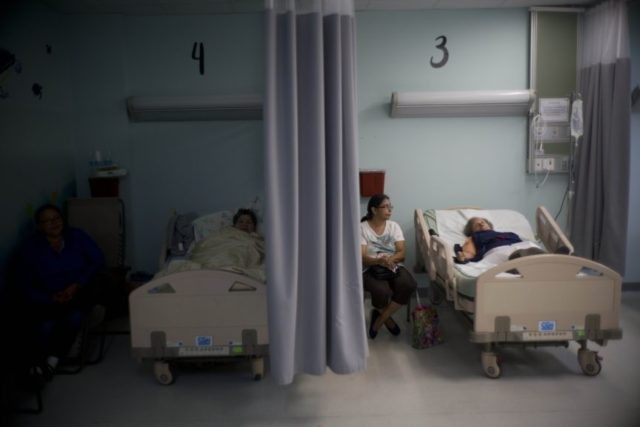The Army Corps of Engineers is helping New York turn existing facilities into hospital space to help the state address an expected influx of patients seeking treatment for coronavirus.
“We’re talking about over 10,000 [hospital rooms] that we are looking at right now,” Chief of the Army Corps of Engineers Lt. Gen. Todd Semonite told reporters on Friday at the Pentagon.
While the Army Corps of Engineers does not actually build projects itself, its engineers make assessments on projects that are needed and work with private contractors to build them.
“We got money from FEMA to go into buildings on Tuesday night. We did the Javits Center yesterday, and we were into some of the SUNY schools yesterday,” he said.
“Today, my engineers were walking through 10 other buildings — five of those are hotel-like capabilities, and five of those are open spaces,” he said.
The agency is currently working with at least 18 states to expand available hospital bed space to address potential shortages.
A recent USA Today study said that in the worst case scenario — if everyone who gets ill requires hospitalization — the civilian hospital system would have 5.7 patients for every bed.
New York Governor Andrew Cuomo said Wednesday the state predicts that as many as 110,000 people will need beds in 45 days, when the state currently has 53,000 beds.
Semonite said his agency is looking at turning hotels, college dormitories, and large spaces into temporary healthcare facilities.
“We cut a contract to be able to have the state set up a lease with that particular facility…and we would go in and turn this into an ICU-like facility,” he said.
He said there are four phases to converting an existing space to a medical facility: First, a state has to nominate facilities in prioritized order. Second, the Army Corps of Engineers, working with private contractors, has to come in and modify those facilities. Third, supplies need to be placed there. Fourth, the state needs to staff it.
“Think of the second floor of a standard hotel. The rooms would be like a hotel room, and then we would build nurses’ stations in the halls, we would have all of the equipment, wireless going into the nurses’ stations,” he said.
Every room would have to have negative air pressure, and doors outfitted with plastic with zippers on them. “It’s a relatively simple process,” Semonite said.
He acknowledged time is of the essence, with most governors predicting a peak somewhere around the middle of April. He said the agency is dealing with the states with the biggest demand first.
“We’re looking very hard at California, the state of Washington, we’ve already been in New Jersey,” he said. “We’re really looking at where’s the biggest demand, so we go to those states first.”
He said the Army Corps of Engineers is designing a standard contract so that states can work with private industry directly. He continued:
If states want to do this on their own and contract by themselves, we’re giving you something that is an [Health and Human Services]-validated concept and you don’t have to wait on the Corps of Engineers. You can do this independently, even to the point where you can go back and be able to try to secure that money through FEMA.
So this goes back to where we need everybody going full-bore to be able to figure out: Where is that bed space capacity delta there and then how can everybody pull together to make this happen?
“President Trump said yesterday on TV, you know, when things get going tough in America, everybody rallies,” he said. “We need our engineering contractors to be able to step up, the hotel industry to be able to step up.”
Follow Breitbart News’s Kristina Wong on Twitter or on Facebook.

COMMENTS
Please let us know if you're having issues with commenting.